Excellent Article on the Twisted Truths of Pinyon-Juniper Forest Removal in the Great Basin
December 31, 2018 - This article by Katie Fite of Wildlands Defense, published a few days ago in Counterpunch, well summarizes what we have discovered about pinyon-juniper treatments. These native trees are simply a scapegoat to hide the real problems.
https://www.counterpunch.org/2018/12/28/the-terrible-destruction-of-pinyon-juniper-forests/
DECEMBER 28, 2018
The Terrible Destruction of Pinyon-Juniper Forests
Two previous waves of pinyon-juniper deforestation have swept the Great Basin. A third wave is underway. These forests naturally cloak the regions’ arid mountains and slopes. Explorer journals, Mining District records and Interior’s own General Land Office survey records provide irrefutable evidence that pinyon-juniper historically occupied much of the landscape. Traces of old stumps, charred wood and charcoal kilns persist to this day.
Botanist C.S. Sargent visited central Nevada in 1879, and observed “the forests of Nevada, consisting of a few species adapted to struggle with adverse conditions of soil and climate are of immense age”. Sargent lamented the “terrible destruction of forests … which follows every new discovery of precious metals”. White settlement and exploitation were fueled by pinyon-juniper wood. Trees were clearcut over vast areas – even their roots dug out – to produce charcoal to process gold and silver ore. Read more>>
Help Stop Remote Nevada Deforestation Project
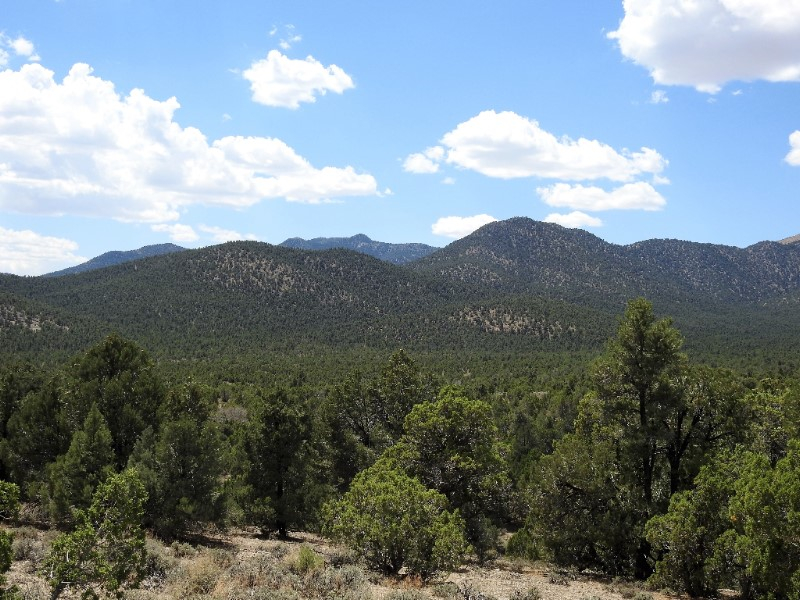
^Old growth pinyon-juniper woodland in the wild and remote North Egan Range of eastern Nevada is threatened with removal.
August 24, 2017 - Ely, Nevada -The Bureau of Land Management (BLM) Ely District is seeking public comments on the Egan and Johnson Basin Restoration Project Preliminary Environmental Assessment. The project location is in both the Egan and Cherry Creek Ranges, located north of Ely, Nevada. Comments are due by Monday, August 28, 2017. While the BLM is calling this "restoration", the reality is that they intend to thin out this native forest on over 84,000 acres. The tree removal treatment methods being considered for this project include hand thinning, chaining, mastication (shredding), whole tree thinning, mulching/chipping, prescribed fire and fuelwood harvest. Treatments would focus primarily on removing pinyon pine (Pinus monophylla) and Utah juniper (Juniperus osteosperma) from sagebrush (Artemisia spp.) communities.
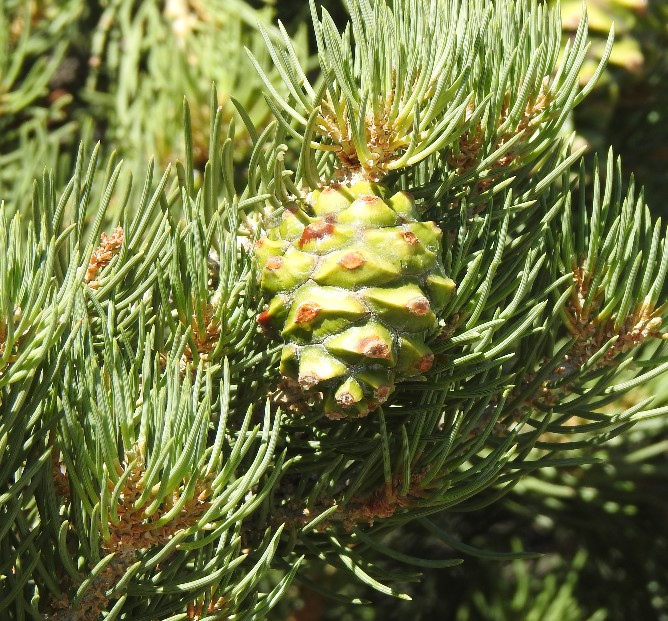
^Pinyon pine (Pinus monophylla).
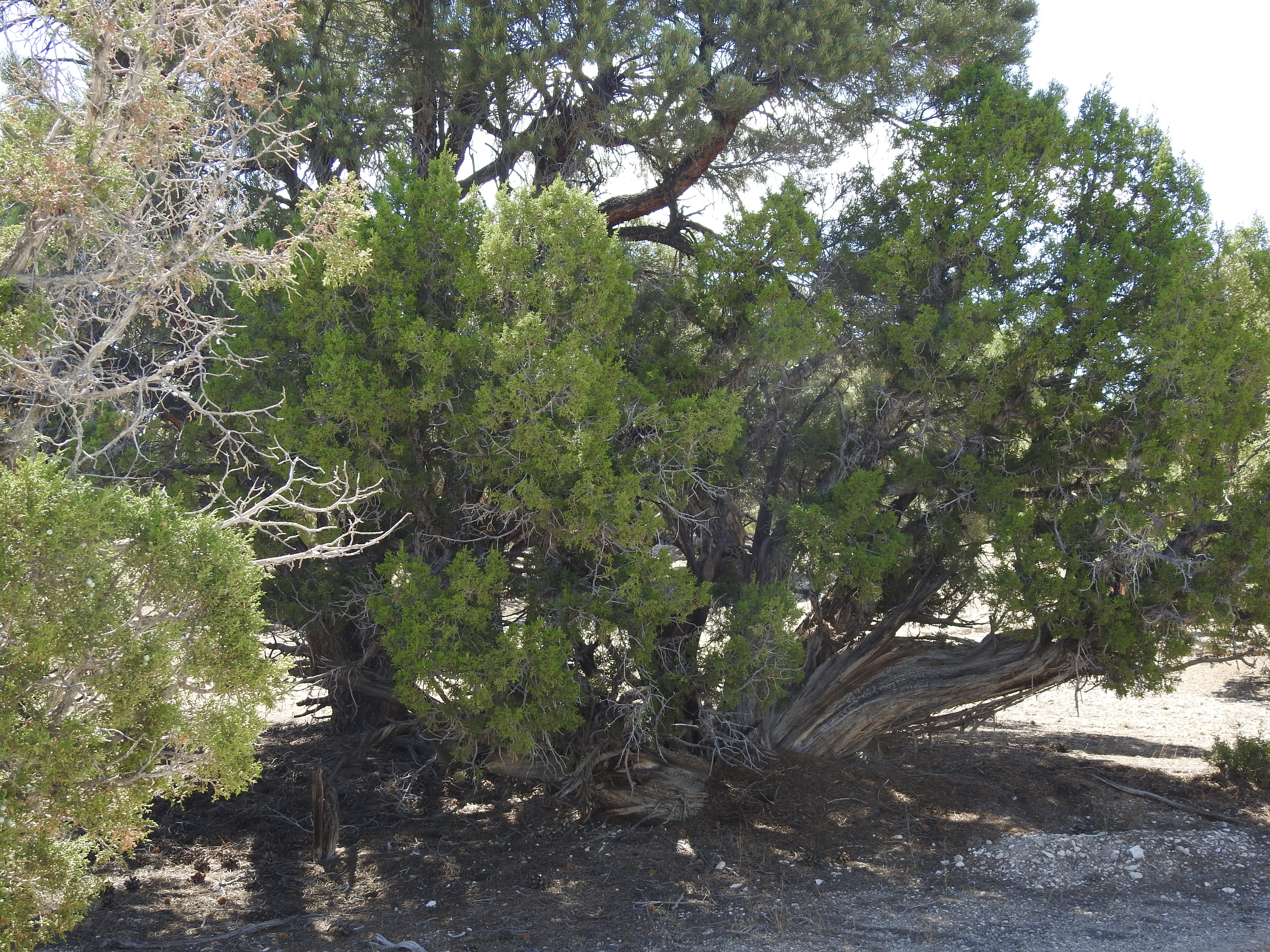
^Utah juniper (Juniperus osteosperma).
According to the BLM, "the purpose of this project is to restore natural site conditions, reduce potential for large wildfires by reducing fuel loading, increase understory grass and forb species diversity, and increase available wildlife habitat."
But some of the trees targeted for removal are hundreds of years old. The Pinyon-juniper woodland is recognized by vegetation scientists as a natural alliance of plant species, a unit of vegetation, containing one or more associations and defined by one or more diagnostic species, often of high cover, in the uppermost layer or the layer with the highest canopy cover. Alliances reflect physiognomy as well as regional to subregional climates, substrates, hydrology, and disturbance regimes. Single-leaf pinyon is an indicator of this widespread natural plant community across the Great Basin, that has successfully adapted to the aridity of mountain ranges and basins in the region.
In spite of pinyon-juniper woodland being recognized as a natural vegetation community by ecologists, the BLM is referring to it as "weedy" and "invasive". The BLM claims that removal is necessary to restore historic fire regimes as well as enhance wildlife habitat for species like the sage grouse. Yet these old growth forests support their own diversity of species. We plan to research further the historic fire regime of the pinyon-juniper woodland in Nevada for a science-based foundation to comment on.
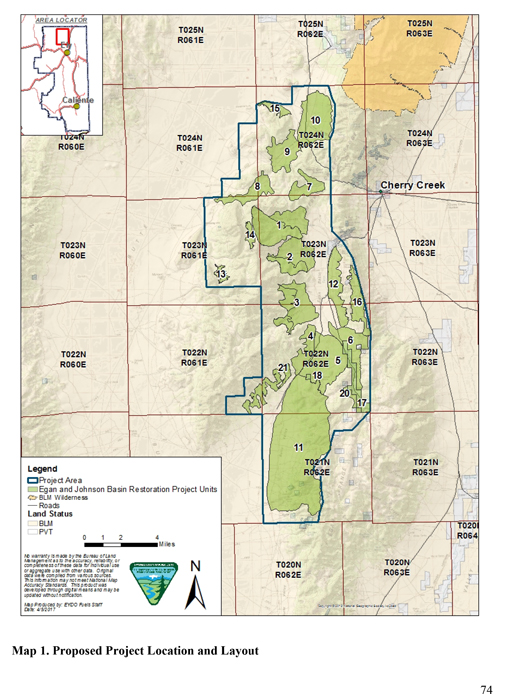
^BLM Map of the project site.
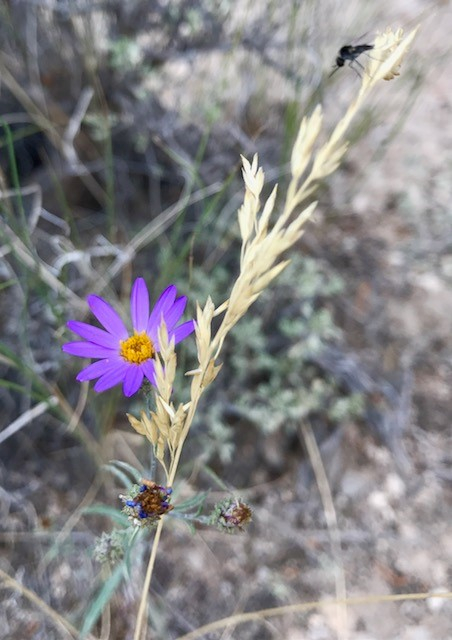
^Above and following, photos from the diverse understory of the pinyon-juniper proposed chaining area: tansy-aster (Machaeranthera sp.) with native pine bluegrass (Poa secunda).

^Abundant cryptobiotic soil crust grew in the pinyon-juniper woodland. What impacts will happen when heavy tractors drag chains across this fragile soil?
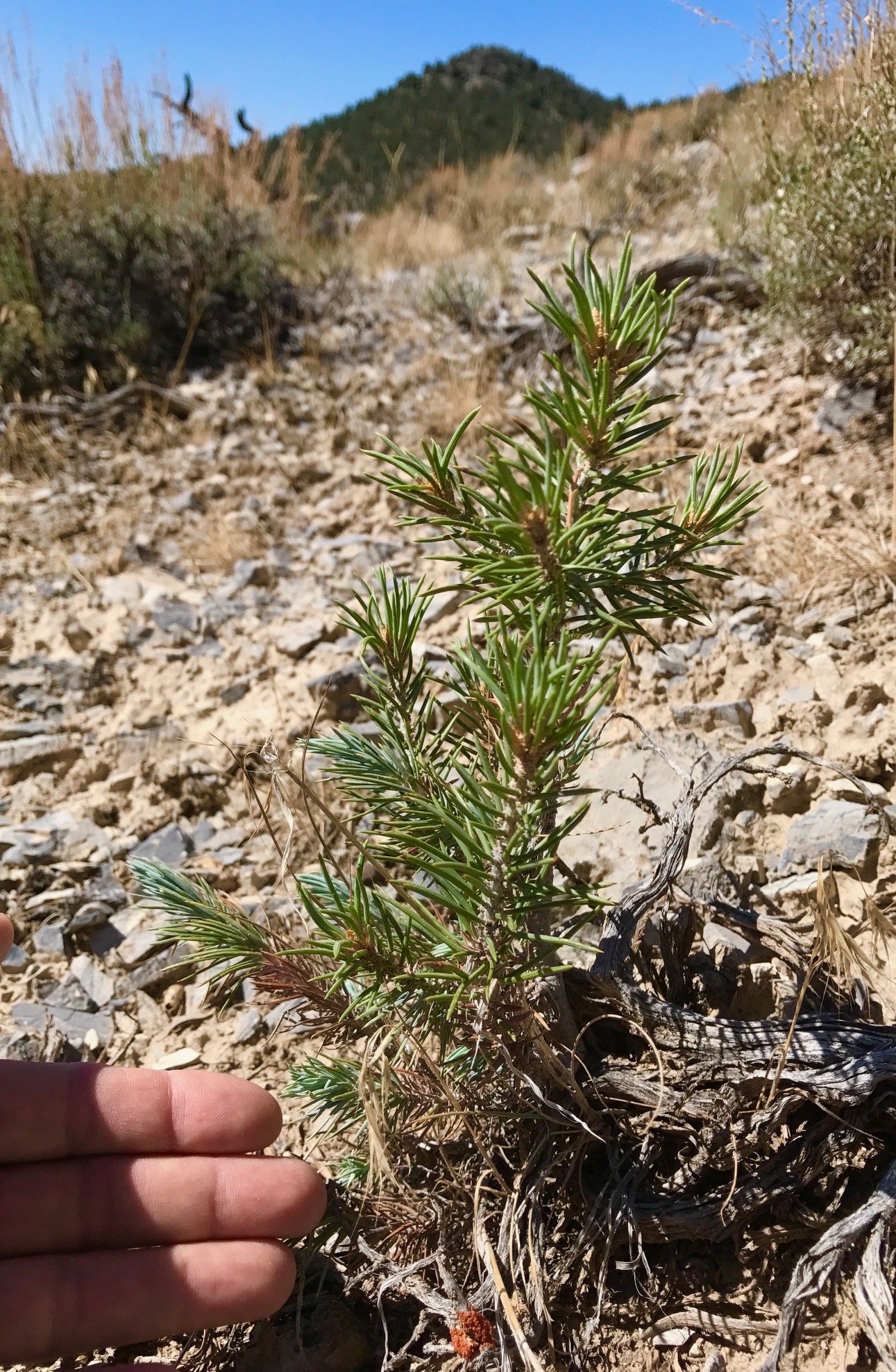
^Young pinyon tree--this forest is not "dying".
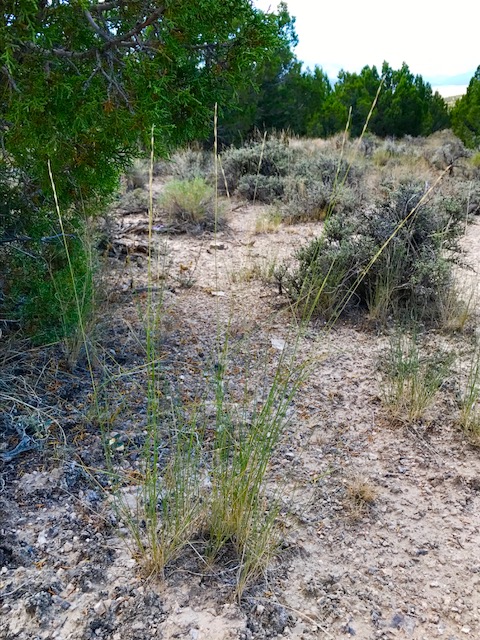
^The native bluebunch wheatgrass (Pseudoroegneria spicata) is common in the pinyon-juniper woodland understory.
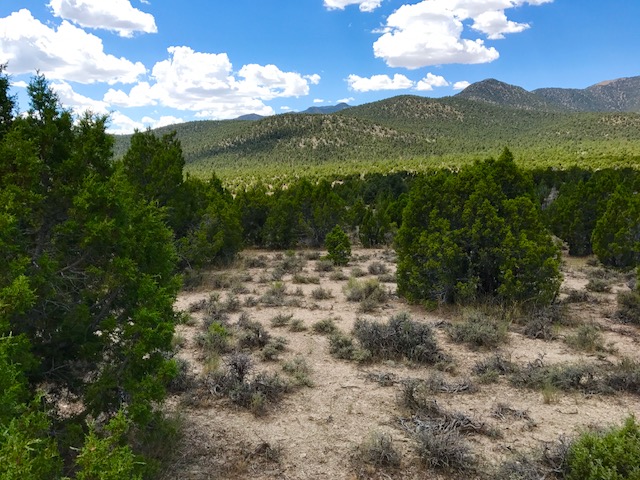
^Pristine pinyon-juniper woodland on the North Egan Mountains, proposed to be chained and masticated in a massive treatment by BLM to increase grazing land.
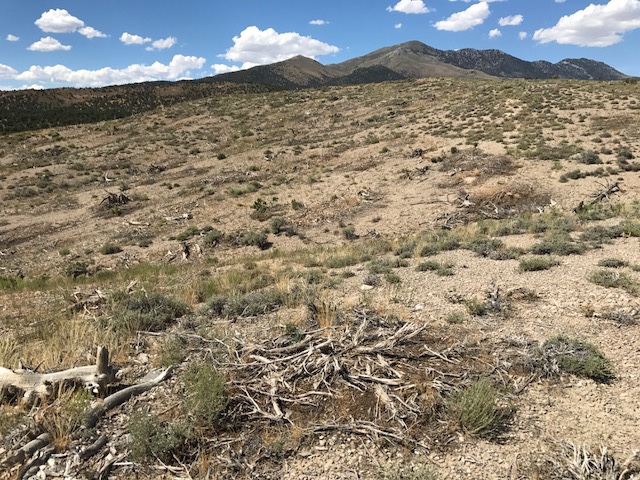
^A pinyon-juniper woodland "treatment" on Spruce Mountain, north of Ely, Nevada, where BLM masticated whole trees into pulp with machines, and cut others down, leaving the woody debris.
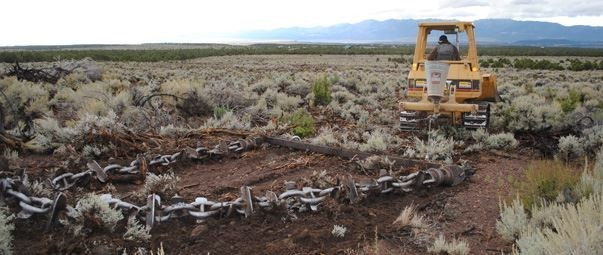
The BLM is proudly claiming that they will use their famous "Ely Chain" to clear the forests (and sagebrush understory) -- a particular method that has cleared many acres of habitat in the past. Massive chains are placed behind one or between two bulldozers and all habitat is literally pulled out of the ground. While BLM claims these treatments will eventually be beneficial for species like the sage grouse and pygmy rabbit, it should be noted that huge chains cause far more damage before any benefits are achieved. (Photo: BLM)
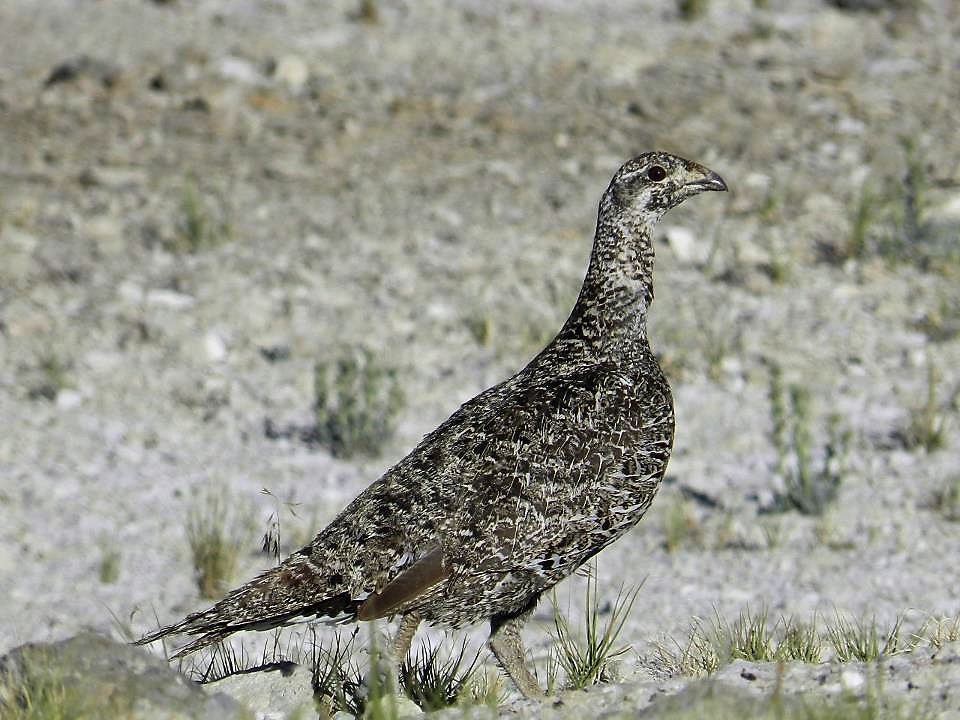
^Sage grouse hen (Photo: Kevin Emmerich).
There is no good evidence that Sage grouse increase with pinyon-juniper treatments and deforestation. We have seen sage grouse in mixed old-growth sage brush-pinyon-juniper habitats. Previous justifications have used modeling to indicate a need for chaining and thinning, but more peer-reviewed scientific research should be done before treatments are continued as a widespread management practice.

^Natural wildfire burn patches open up the pinyon-juniper woodlands in the Egan Basin in a mosaic, here on the Cherry Creek Range. We do not believe BLM has the capacity to halt and control all wildfires in the Great Basin, thus many wildfires caused by lightning burn up to the crests of ridges and go out. The natural fire return interval for any one patch of pinyon-juniper woodland is long, ca. 150-500 years. Fires are stand-replacing, killing the trees, which gradually seed back in (sometimes with the help of pinyon jays and scrub jays), starting a successional trend that in a few hundred years will grow into a woodland again. BLM should consider a "Let It Burn" policy where human habitations are not threatened, to allow areas to be opened up for sage grouse and wildlife early successional habitat. We will be studying fire ecology more this year in the pinyon-juniper woodlands.
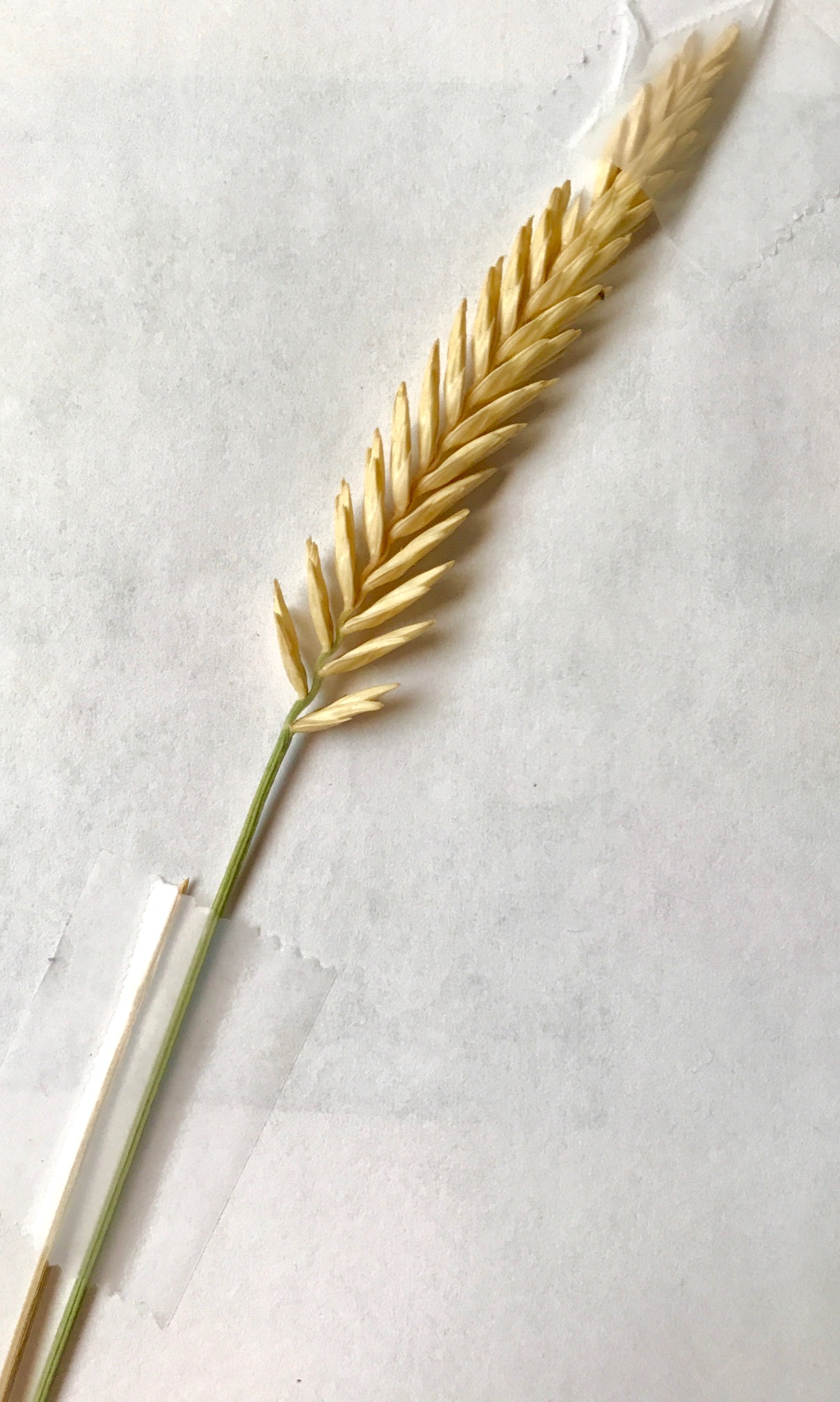
^Crested wheatgrass (Agropyron cristatum), a commonly used "range improvment" grass from Eurasia. How will this help sage grouse?
The BLM has eliminated the "Native Seed Only" alternative claiming that native seeds are never available in the quantity they need. Instead, the will re-vegetate with non-native species such as Crested wheatgrass (Agropyron cristatum) -- see above, an introduced grass from Eurasia that is commonly seeded on rangelands for cattle. BLM is proposing to seed grasses such as this onto the native pinyon-juniper-steppe ecosystems of the Egan Range area treatment, after clearcutting/chaining parts of the woodland. This is unacceptable and is not "restoration." Call it for what it is: range management, but not ecosystem management.
Send in your comments by August 28th to:
BLM Ely District Office, 702 North Industrial Way, Ely, NV 89301, Attn: Katie Walsh
Email: kwalsh@blm.gov
Fax: 775-289-1910
Here is a sample letter you can copy and paste:
Dear Ms. Walsh,
Please accept the following comments on the Egan and Johnson Basin Restoration Project Preliminary Environmental Assessment.
I would like to ask BLM to consider a more ecologically favorable alternative to removing and thinning over 84,000 acres of native pinyon pine and juniper forest in the Egan and Johnson Basins.
The Pinyon-juniper woodland is recognized by vegetation scientists as a natural alliance of plant species. The pinyon/juniper community in this region has been well established for thousands of years and supports a diverse natural ecosystem. Single-leaf pinyon is an indicator of this widespread natural plant community across the Great Basin, that has successfully adapted to the aridity of mountain ranges and basins in the region.
Specifically, we would like the BLM to:
- Prohibit all chaining on this habitat, chaining causes great ecological damage.
- Allow no mastication (shredding of trees).
- Adopt a No Action Alternative and conduct more scientific research to provide evidence that these treatments are successful before moving on future plans.
- Never re-vegetate with non-native species.
- Review all future proposals with a full Environmental Impact Statement.
- Stop referring to native ecosystems as "invasive" and recognize natural succession patterns.
Your Name.
This work to ground-check pinyon-juniper woodland treatment areas on public lands has been supported in part by a grant from Fund for Wild Nature. Please consider donating to Basin and Range Watch to further our goal of conserving the pinyon-juniper woodlands across Nevada and California. We will be examining a BLM treatment ongoing in the Bodie Hills, CA, next, and your donations would greatly help us accomplish this fieldwork. Thank you for your support!
Basin & Range Watch Receives Grant to Study Pinyon-Juniper Woodlands Under Threat in the Great Basin
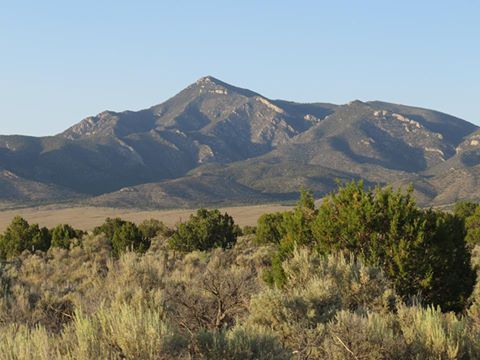
^The Egan Range, near Ely, Nevada. Not in need of management.
July 29, 2017 - Native ecosystems of the Great Basin are under attack from long-running management policies used by the Bureau of Land Management (BLM) that are coming more and more under question.
Using terms such as "treatment" and "restore" BLM proposes to clearcut and thin natural communities that may have more to do with livestock range improvements than helping sage grouse and other wildlife.
One area will cover almost 85,000 acres in the Egan Range of eastern Nevada, near Ely:
"The Bristlecone Field Office is proposing to conduct a habitat and vegetation restoration project within an 84,675 acre project area in the Egan and Johnson Basins. Treatments would focus primarily on removing pinyon pine (Pinus monophylla) and Utah juniper (Juniperus osteosperma) from sagebrush (Artemisia spp.) communities. The proposed action is to treat approximately 24,375 acres of 21 treatment units and to manually thin pinyon and juniper in some areas (low density tree areas) throughout the entire 84,675 acre project area. The purpose of the treatments would be to restore sagebrush communities and improve woodland health by reducing tree canopy coverage and density of pinyon pine and Utah juniper. This would also improve Greater sage-grouse and other wildlife habitat, improve vegetation community health, decrease heavy fuel loads, and improve resistance and resiliency to disturbance (wildfire, weeds, etc.)." (See BLM's eplanning page)
In Utah, pinyon and juniper trees will be destroyed on the Tavaputs Plateau near Sunnyside, UT. BLM describes how "Encroaching pinyon-juniper trees will be thinned, shredded and burned utilizing various treatment methods including; thin-pile-burn, lop & scatter bullhog and seeding." This is purportedly to "restore" sage grouse habitat. (See BLM's eplanning page)
Basin and Range Watch recently recieved a grant from Fund For Wild Nature to document the impacts of these BLM treatments on Pinyon-Juniper woodland in the Great Basin, and use the latest science to study the historical ecology and relationships between wildfire, wildlife, and grazing in pinyon-juniper woodlands. We will share our findings later this year.
BLM's Sagebrush Ecosystem Management Project--Not Ecological
^Pinyon-juniper woodlands in the Kawich Range, Nye County, Nevada.
December 2, 2016 - Central Nevada - Basin & Range Watch sent comments to the Bureau of Land Management (BLM) opposing their Proposed Action for Sagebrush Ecosystem Management Project. The proposed programmatic action would be District-wide in the Battle Mountain District of central Nevada and include portions of Lander, Eureka, Nye, and Esmeralda Counties.
BLM says the goals for this project include "decreasing the severity and intensity of future wildland fires by reducing hazardous fuel loads, sustaining and improving sagebrush plant communities, and managing Phase I and targeted Phase II pinyon-juniper stands in wildlife habitat."
Improving sagebrush habitats by removing native old-growth pinyon-juniper woodlands is not supported by science. A better way to improve sagebrush communities would be to stop removing and degrading them, and fragmenting them with fracking wells and roads, transmission lines, and other developments.
BLM goes on to say, "The majority of the project will focus on pinyon-juniper tree removal utilizing a variety of different methods that will be determined at a site specific level. The proposed action will include criteria that will determine where and how treatments will be implemented at each different site. In addition to pinyon-juniper removal, the BLM is also proposing to conduct herbicide treatments to remove non-native plants, allow the seeding and planting of native species and permit the collection of native seeds. The primary purpose and need of this project is to protect and enhance sagebrush plant communities, restore the natural function of riparian areas, and to promote the health of pinyon-juniper stands to improve wildlife habitat and natural resources."
See:
https://www.blm.gov/nv/st/en/info/newsroom/2016/october/battle_mountain__blm.html
^Native old growth Utah juniper (Juniperus osteosperma) in the Great Basin of Nevada.
Old Growth Pinyon-Juniper Woodlands Should Not Be Removed
Basin and Range Watch is concerned that the Bureau of Land Management plan to remove pinyon-juniper forests will result in the loss of old growth trees and will negatively impact the ecology of the regions targeted for tree removal.
We are also concerned about the large-scale use of herbicides to treat invasive weeds.
The plan appears to target a very large region including Monitor Valley, Hot Creek Valley, Little Stone Cabin Valley, Reese River Valley, Antelope Valley and a host of other regions.
The majority of the project will focus on pinyon-juniper tree removal utilizing a variety of different methods that will be determined at a site specific level. The proposed action will include criteria that will determine where and how treatments will be implemented at each different site. In addition to pinyon-juniper removal, the BLM is also proposing to conduct herbicide treatments to remove non-native plants.
We maintain that there is no such thing as senescent pinyon-juniper woodland, and that old growth pinyon-juniper communities should be maintained without clearing or treatment to preserve their diversity of species and natural community values.
Historical ecology studies suggest that some "expansion" of pinyon-juniper woodland may be in part due to recovery of the natural community to intensive resource extractive uses over more than 100 years from pioneering times into the early 20th Century. Mining use of charcoal cutting, fence construction, firewood cutting, and other uses may have reduced areas of pinyon-juniper woodland. These areas should be conserved and not managed to remove trees.
Removal of pinyon/juniper forest can change the natural ecology of the forest. Researchers Bristow et al. say: “Chaining treatments can be rapidly recolonized by trees and have the potential to create or amplify landscape-level shifts in tree species composition.” [See: A 40-Year Record of Tree Establishment Following Chaining and Prescribed Fire
Treatments in Singleleaf Pinyon (Pinus monophylla) and Utah Juniper (Juniperus
osteosperma) Woodlands. 2014. Nathan A. Bristow, Peter J. Weisberg, and Robin J. Rangeland Ecology & Management 67:4, pages 389-396.]
^Singleleaf Pinyon (Pinus monophylla).
Removal of pinyon-juniper woodland has many unknown impacts to wildlife. Conversion impacts are very poorly documented. A study from the Department of Fish, Wildlife, and Conservation Biology, Colorado State University demonstrated “marked differences in habitat use between chained sites and reference woodlands for most detected mammal species. Bobcat, mountain lion, American black bear, golden-mantled ground squirrel, and rock squirrel all showed a negative response to historically chained sites, indicating long-term effects of tree removal on these species. In contrast, habitat use of chipmunk, mountain cottontail, and coyote did not differ between chained and reference sites. For most species, habitat use was influenced by specific vegetation characteristics, such as proportion of tree cover, which could be factored into management decisions. By understanding the long-term consequences of tree removal for diverse mammal species, we are better equipped to adapt forest management practices to benefit species of both economic and conservation concern.” [See: Pinyon-juniper removal has long-term effects on mammals. 2016. Travis Gallo, Lani T. Stinson, Liba Pejchar. Forect Ecology and Management 377, pages 93-100.]
We are concerned that the BLM is misinterpreting the ecological condition of these forests as “disturbed” and that pinyon juniper forests are being looked at more like weeds than natural, old growth plant communities that promote and maintain functioning ecological systems with a diversity of plant and animal species.
Many of these trees are hundreds of years old and keep a natural record of past climates. They should not be removed in the name of false ecological restoration.
We would also like to know which herbicides would be used to remove invasive weeds. Plateau is commonly used to remove cheat grass, but comes with many risks and hazards. Large areas treated with this herbicide are subject to water contamination and public health risks. The Environmental Protection Agency has determined that Plateau is toxic to aquatic ecosystems and can be hazardous to humans and animals exposed to it. There is more information on Plateau here: http://www.arborchem.com/label-sds/sds_BASF_Plateau.pdf
Any Environmental Assessment should analyze the use of all potential herbicides and their toxicity to water, ecology and public health.
Pinyon-juniper woodlands in the Kawich Range, Nevada.
Basin and Range watch opposes any false “Ecological Restoration” plan that proposes to remove old growth, native pinyon-juniper forest. To imply that this would be better for the sage grouse or local ecology actually overlooks the impacts such an alteration would have on native ecosystems. The BLM should be looking at better alternatives to preserve the sage grouse such as limiting oil and gas leasing, limiting the spread of large-scale wind energy, managing the land for no new transmission lines or roads, and controlling livestock grazing in a more ecological way. Taking out native trees is not ecological restoration, but an attempt to mitigate other intrusive land uses. Furthermore, the large-scale use of industrial herbicides to control the spread of invasive weeds as a result of pinyon juniper removal poses an unnecessary risk to native plants, water quality, wildlife and public health. This should not be approved.
